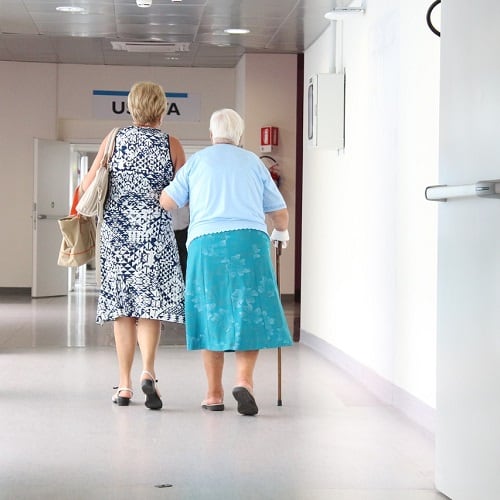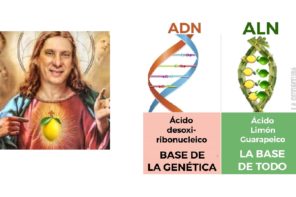About a year ago around Christmas, South African Minister of Health Aaron Motsoaledi and ANC colleagues released the anticipated White Paper on implementing ambitious health system reforms branded National Health Insurance (NHI). NHI aims to address class and racial inequities in healthcare by improving the nation’s public health facilities, often-reported as deplorable, a current state of affairs due to apartheid-era racial segregation and post-apartheid flights of white capital and expertise into private health facilities. By and large, the economically disadvantaged black majority access public facilities because they are nominally ‘free’. For care at private facilities, one pays out of pocket or through a medical aid scheme, a private health insurance policy one can subscribe to individually or through their employers. Medical aids enable people to access care at better-equipped private hospitals, but medical aids are also unaffordable for most of the population. Even for the ones who can afford it, benefits are often used up by late in the policy year and propel healthcare consumers back into public facilities.
The White Paper is an interesting 90-page policy document. It has proposed mechanisms like a national tax, coaxing private practitioners back into public facilities, building more nursing schools, improving public hospitals, clinics, IT systems and government labs, and expanding community health interventions (some with unwieldy names, like “WBPHCOT” or Municipal Ward-based Primary Health Care Outreach Teams), to instill preventive health seeking behaviors.
The White Paper includes liberal, critical language: “The implementation of NHI is a reflection of the kind of society we wish to live in: one based on the values of justice, fairness and social solidarity… healthcare should be seen as a social investment and therefore should not be subjected to market forces where it is treated as a normal commodity of trade” (p. 1, 1.1.4).
It has input from academics, who conceive health care as a “Public Good” (p. 10, 2.3.56iv), something that even some critics in the medical aid insurance industry echo (Ruiters et al. 2012). Like the demands of #FeesMustFall and #OutsourcingMustFall university-based protests movements[i], the White Paper demands in-sourcing healthcare support services like security, food prep, cleaning and laundry staff (p. 40, 6.5.220), rather than using private contractors.
The White Paper speaks too to pro-business concerns about taxation, about tax efficiency and buoyancy, the “ability of the tax system to raise revenue during all phases of the business cycle” with stabilizers like “lower income tax liability during periods of economic decline (through assessed losses for business, for example) and increased collection during periods of strong growth through a progressive rate structure” (p. 49, 7.2.2.265e). One of my colleagues, a self-identified fiscal conservative and managing tax accountant at one of the Big Four US accounting firms told me this makes good sense. Taxes matter for NHI in the form of equitable “mandatory prepayment of health care” paid by all citizens proportionate to their financial ability. Taxes will funnel into a National Tax Fund and be used to pay for these infrastructural and human resource developments. It seems like the latest version of NHI has something to offer for everyone.
I specifically headed into pilot research on NHI, funded by the Wenner Gren Foundation, to ask how it affected the way people cared for each other across generations within family systems. At the household level, who pays for one’s own and others’ healthcare, how, and through what kinds of economic and sociocultural obligations? South Africa has high rates of unemployment and a robust social grant system, described recently by Jim Ferguson (2015), that channels state aid to women, children, and the aged. How might the NHI affect grants, medical aids, and the way householders depend on one another? What specific facets of NHI speak to household matters of care for older persons, the generation who carries memories and political capital of the anti-apartheid struggle into the post-apartheid era?
Importantly, The White Paper rides on medicalized generational distinctions between older, unhealthy adults and healthy youth to shore up examples of what social solidarity means and does for the post-apartheid constitutional right for all citizens to access healthcare.
First, the White Paper cites the future prospects of NHI to produce a healthy, long-living population, saying by 2030, “South Africa will have a life expectancy of at least 70 years for men and women; the generation of under-20 should be largely free of HIV” (p. 7, 1.2.2.43). This links to broader social security reforms meant to empower “vulnerable groups such as the young, disabled and the elderly” (p. 62, 7.7.331). The elderly and disabled are singled out as having special needs (p. 57, 7.3.5.303), likely a reference to disease chronicity and long-term care, and are groups who will be prioritised for initial NHI registration (p. 3, 1.1.17).
Generational distinctions are also a critical axis in the policy discourse of solidarity in the form of health cross-subsidisation (p. 10, 2.3.55ii) and the role of medical aids. For conventional medical aids to work, their risk pool needs to be cross-subsidised, or have a relative balance of healthier or younger people’s contributions to offset costs associated with providing care for sicker and/or older people. Current medical aids are fragmented in this regard (p. 13, 3.1.2.67c). Yet they have great potential for driving health equity along lines of age, class, and sex-gender. Medical aids in South Africa operate not on risk-based principles, but rather solidarity-based financing: older, sicker members of medical aids, even those living with HIV/AIDS, the example often goes, do not pay more for their health coverage than younger, healthier members of the same scheme. The problem, however, is that most medical aids have contributions rates that are not income proportionate. While I was a postdoctoral fellow at the University of the Witwatersrand in 2014, the employee medical aid was scrutinized by many workers because the multi-million-Rand earning Vice Chancellor’s monthly contributions were equal to those of janitorial staff who only made R2000 per month.

Advertisement for Government Employees Medical Scheme (GEMS) at a shopping mall pharmacy and general store (2015, Johannesburg, South Africa, photo by Casey Golomski)
Aside from these brief points in the otherwise optimistic White Paper, older persons’ long-term or chronic care needs are seemingly unmet in this latest round of proposed reforms. In South Africa, older persons can only generally cover their health or eldercare costs by paying out of pocket, relying on family members, charity and welfare organisations, or getting state aid in the form of an Old Age Pension of R1,500 per month, available to everyone over the age of 60 who is not cared for by a state institution or is not making more than R69,000 per year. The Pension amount is pitiable, even if it plays an important role in increasing older persons’ access to healthcare (Schatz et al. 2012, Lloyd-Sherlock and Agrawal 2014). Yet, as I found while living in a small Mpumalanga town and working with the mostly black staff of a private eldercare facility in 2015, many younger and/or unemployed members of an older person’s household consume most if not all of the pension themselves.
Likewise, medical aids do not have special policies to help cover long-term eldercare costs nor geriatric medicine.
I interviewed a dozen medical aid salespersons and administrators at their offices in 2014 and 2015 who spoke about NHI as “pie in the sky”, a “dream”, or “never going to happen.”
The fear from some in this industry was that new competing risk-based insurance policies— where older, unhealthier persons pay more for coverage—known as hospital cash plans will eventually “cannibalise” medical aids (Alex van den Heever, Old Mutual Chair in Security Studies, University of the Witwatersrand, personal communication 2014). In the same interviews with administrators, most told me that because of certain stipulations and pricing mechanisms, they encouraged their young and middle-aged adult consumers not to list aging parents as policy dependents. Doing so would be too costly, they said, but in turn, they had no other real answer to the question of how to then satisfactorily or sufficiently pay for eldercare.
Christmas is around the corner, for better or for worse. In South Africa, many black folks cash in on their Christmas clubs, small-scale year-long women-centric savings clubs to access cash and get on the move back home for a short holiday (Ngwane 2003, James 2015). Some will pool the cash for gifts and special foods and libations—I liked the rainbow-like layered trifles best usually served at parties in neighboring Swaziland for the two Christmases I spent there. In the context of a still struggling public health system, others will likely pool cash for a family member whose medical aid may have run out by now for her- or himself and dependents. Persistent wounds, chronic illness, and unwillingness to return to public health facilities will reroute many people on a trip to a private one, those more advanced biomedical technologies, resources, and infrastructure, owned and operated by white capital. The prospects for better eldercare options and health financing are still opaque a year after the White Paper’s release, but it is likely still on many South Africans’ wish-lists.

Gogo Melinah Dlamini’s pre-Christmas haul from her daughter working in South Africa (2010, southwestern Swaziland, photo by Casey Golomski)
References:
Ferguson, James. 2015. Give a Man a Fish. Durham, NC: Duke University Press.
James, Deborah. 2015. Money from Nothing. Stanford: Stanford University Press.
Lloyd-Sherlock, Peter and Sutapa Agrawal. 2014. “Pensions and the Health of Older People in South Africa.” Journal of Development Studies 50(11): 1570-1586.
Ngwane, Zolani. 2003. “‘Christmas Time’ and the Struggles for the Household in the Countryside.” Journal of Southern African Studies 29(3): 681-699.
Ruiters, Greg, Di McIntyre, Rene Loewensen, and Robert van Niekerk. 2012. “Towards Universal Health Coverage in Southern Africa.” Universal Health Care in Southern Africa, Greg Ruiters and Robert van Niekerk, eds. Pp. 186-202. Scottsville: University of KwaZulu-Natal Press.
Schatz, Enid, Xavier Gómez-Olivé, Margaret Ralston, Jane Menken, and Stephen Tollman. 2012. “The Impact of Pensions on Health and Wellbeing in Rural South Africa.” Social Science & Medicine 75(10): 1864-1873.
Notes:
[i] Beginning in 2014 with the #RhodesMustFall movement at the University of Cape Town, these are student-led protests calling broadly for the decolonization of post-apartheid South African higher education administration, financing, and pedagogy. #FeesMustFall mobilized broad social and university support to halt tuition fee increases in the 2015 academic year, and #OutsourcingMustFall adjoined to this movement calling for an end to universities’ outsourcing of custodial, security and food service staff to private contractors.








